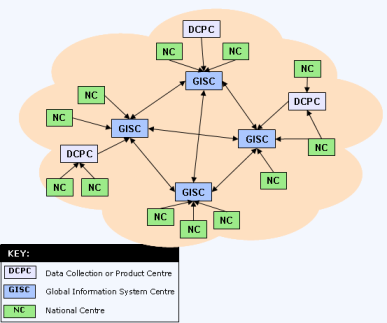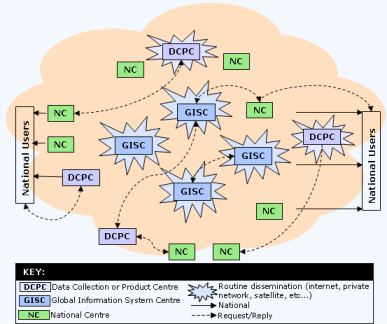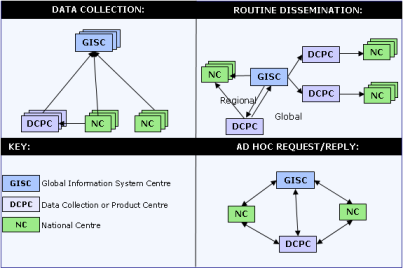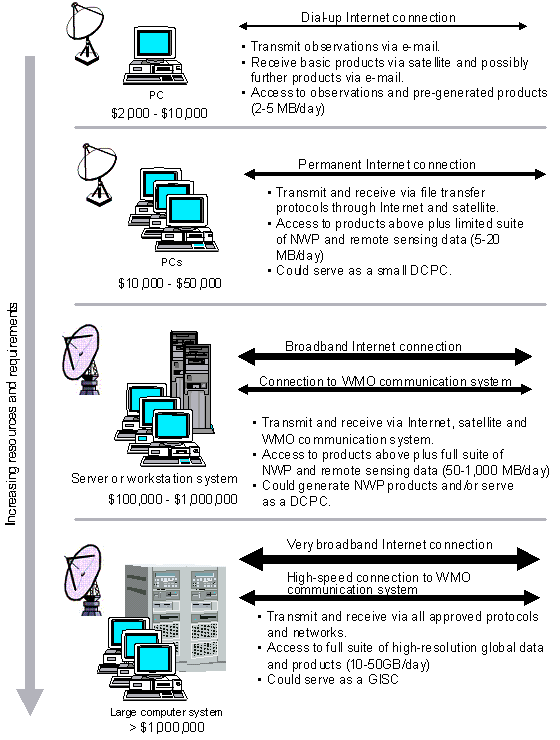| Data Communication Structure |
| |
| Security and authorization |
| In accordance with NC's responsibilities to serve data and product needs of their country, NC's would provide for the authorization of their respective national users to access WIS, as required. Appropriate identification, authentication and authorization procedures will be exercised through relevant standards. |
| |
| Data archives |
| WIS would not control data archiving. It remains the responsibility of the respective WMO programmes and relevant centres. |
| |
| Data flow |
| The flow of information between these centres is illustrated in figures 2 through 4. Figure 2 outlines the collection of observations and products. It is not considered necessary to standardize the physical links to be used between all of the suppliers and collectors. These could instead be decided by bilateral agreement to best match the requirements and capabilities of the parties involved. However, Members would be encouraged to use standard protocols recommended by WMO. |
 |
| Figure 1: Information collection data flow (Arrows indicate data flows; no physical links are implied) |
|
| |
 |
Figure 2: Information distribution (Arrows indicate data flows; no physical links are implied)
dissemination of products (both routine and non-routine) |
|
| |
| Routine dissemination of observed data and products would be accomplished through an automatic broadcast or “push” system that could be implemented via a variety of technologies, including the existing GTS. Ad-hoc (non-scheduled) and special requests for data and products would be satisfied by a request/reply (“pull”) system. The “push” and “pull” systems, operating in parallel, should be available to all users of WMO data and products. |
| |
 |
| Figure 3:simplified view of the various categories of information flow |
|
The scope for the implementation of a NC is very wide, depending on the resources available and the national requirements. Fig 9. below shows the spectrum.
|
 |
Figure 4: Possible development of WIS NC |
|




